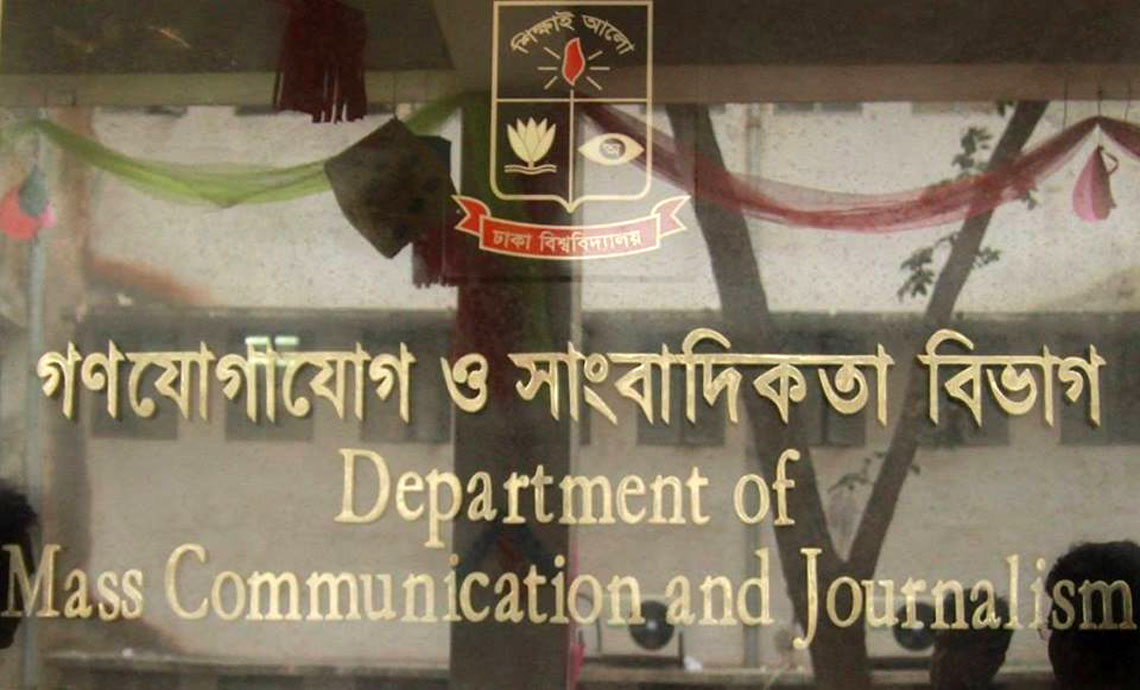Profile of the Department of Mass Communication and Journalism

It was a modest start with a diploma in journalism back in 1962. But since then it has been the leading department in the discipline of media studies in Bangladesh. The Department of Journalism expanded its academic programme; the graduate programme was started in 1967 and the undergraduate in 1977. Over the years by overcoming setbacks the Department grew into one of the most important departments in the Faculty of Arts and later in Social Sciences. The breadth and depth of the course curricula necessitated a new nomenclature of the Department. It turned into the Dept. of Mass Communication and Journalism.
In justification of the nomenclature equal emphasis is laid on both mass communication and journalism courses. The course arrangement indicates that there is no contrariety in the nature of the courses; rather there is a complementarity in the arrangement. A strong grounding in the concepts of communication and journalism, history of media, interrelationships between media, society and culture, reporting and editing for the media at different levels, media research methods and a wide range of other communication/journalism courses enable the students to take a broad view of communication in cultural contexts and fit into different areas of employment. At the core of the course, curriculum is what is called ‘immersive learning’ that melds content, skills, societal need, and students’ interests into an experience –an intense, real-world transformative experience. The Department of Mass Communication and Journalism is a vibrant, growing and exciting place to begin either a career in communication or to learn how to be a savvy and skilled user of media and communication. Growing from a traditional, hands-on, professionally oriented communication and journalism programme, the Department represents the best kind of synergy between the how-to skills of professional communication and journalism and the whys and wherefores of critical thinking, theory and philosophy on which media and communication studies are based.
The students are learning in an environment that is without parallel in journalism and communication education in the country. There are 30 full-time and nine part-time teachers. Part-time teachers are mostly from the media. A considerable number of full-time teachers also have had experience of working in the media. The Department is equipped with a media centre, consisting of three labs for videography, photography and computer-mediated communication. Through coursework and extracurricular activities, the faculty encourage the students to communicate with competence, have a clear perception of ethical values and historical perspectives and be aware of the functions and responsibilities of communications institutions. A high priority is given to encouraging the students to be able to adapt to the realities of diversity in media communication at national and global levels. While rooted in tradition, the Department also offers an innovative, student-centered curriculum that prepares students for careers in contemporary mass communications. There are opportunities to be involved in research at both the undergraduate and graduate levels. The research initiatives and publications are showing signs of rapid growth.
